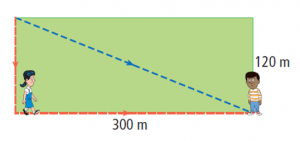One of the common misconceptions by students when they first encounter the concept of a 0 exponent is to think that a number to the power of 0 is equal to 0. For example, many students believe that 20 = 0. The correct result is actually 1, in other words 20 = 1.
This misconception stems from their initial understanding of what exponents are. Students are taught that 23 = 2 x 2 x 2, and so when they encounter the situation of 20, it is natural to believe that it is equivalent to the number 2 multiplied by itself 0 times, which should give a result of 0. What students often fail to understand is that each time an exponent increases by 1, the value doubles. Taken in reverse, the value of 20 should be half of the value of 21, which would give the correct conclusion that 20 = 1.
To teach the concept of the 0 exponent, I have decided to take the TGEM approach as discussed by Khan (2010) , using an activity I created using the Desmos platform. The activity can be viewed here:
https://teacher.desmos.com/activitybuilder/custom/597642998fb671717b38af33
This activity encourages students to brainstorm, and share their thoughts as to what 20 is equal to, before diving into an exploration that will eventually lead students to the value of 1 using a visual approach. The activity builds on the idea to discuss the concept of negative exponents and their meaning. I would utilize the above activity using the following steps:
- Point students to the above link to allow them access to the activity. Ensure that a class code is created so that the class can join. Turn on teacher pacing for this activity to ensure students don’t work ahead, and to encourage discussion along the way.
- On the first screen, pause and allow the students to read. Allow students to brainstorm what their initial thoughts are about the meaning behind the concept of a 0 exponent. Using the teacher dashboard, display the students input to look for commonalities in thinking.
- On the second screen, ensure students understand that the numbers are doubling at each step. Students should be informed that they need to be precise, and that the “numbers are increasing” is will not adequately describe the pattern they see.
- On the third screen, ensure students understand that the numbers are halving at each step. Students should be informed that they need to be precise, and that the “numbers are decreasing” will not adequately describe the pattern they see.
- On the forth screen, ensure students can now reach the conclusion as to what the value of 2^0 is. Spend some time explaining the idea that a power with an exponent of 0 is equal to 1, no matter what the base is.
- On the fifth screen, ensure students continue the pattern to reach a conclusion as to the meaning of a negative exponent.
Khan, S. (2010). New pedagogies for teaching with computer simulations. Journal of Science Education and Technology, 20(3), 215-232. Available in Course Readings.
 How much farther would Jane walk to reach Albert if she went around the field, as opposed to directly across?
How much farther would Jane walk to reach Albert if she went around the field, as opposed to directly across?